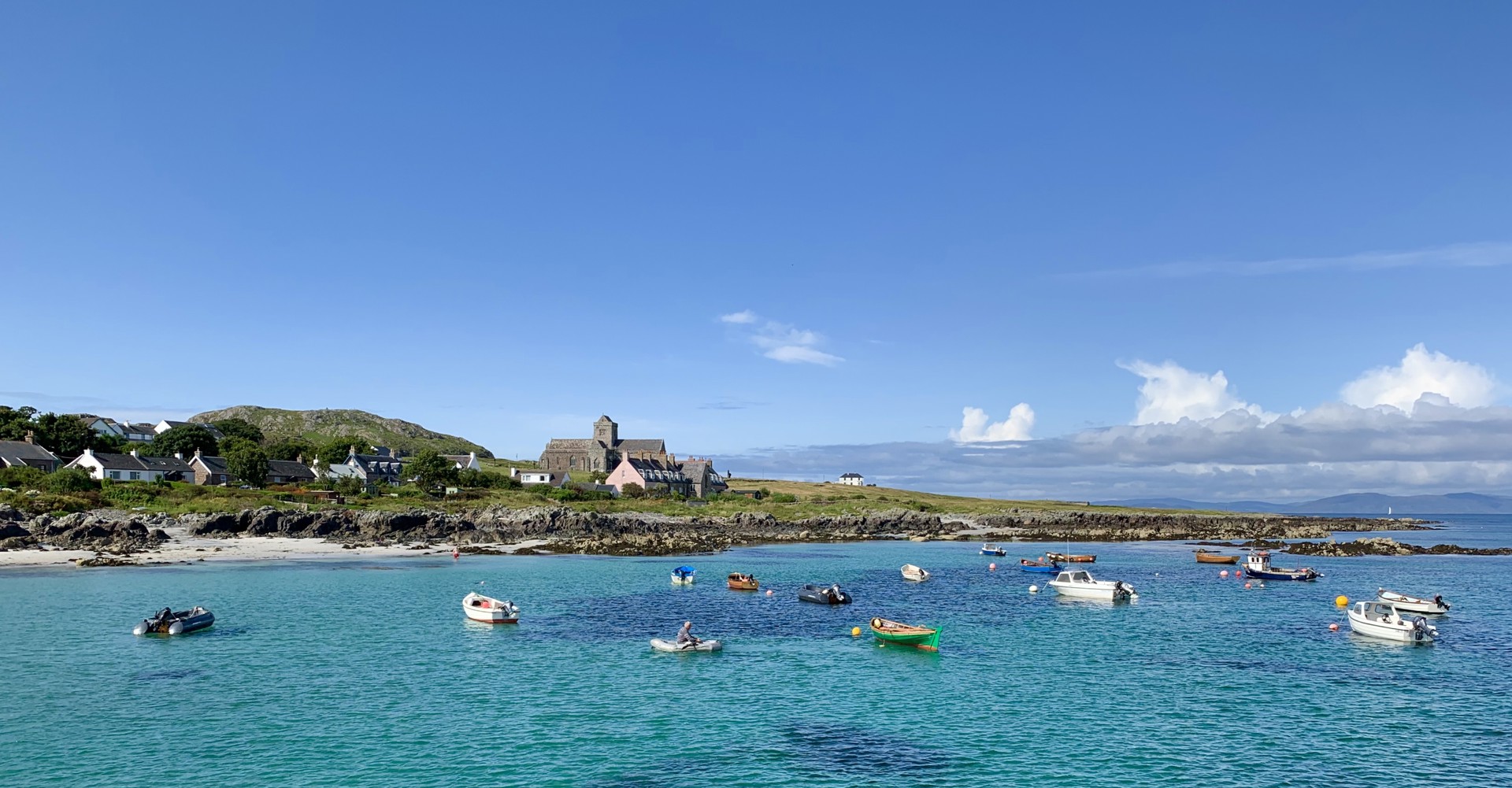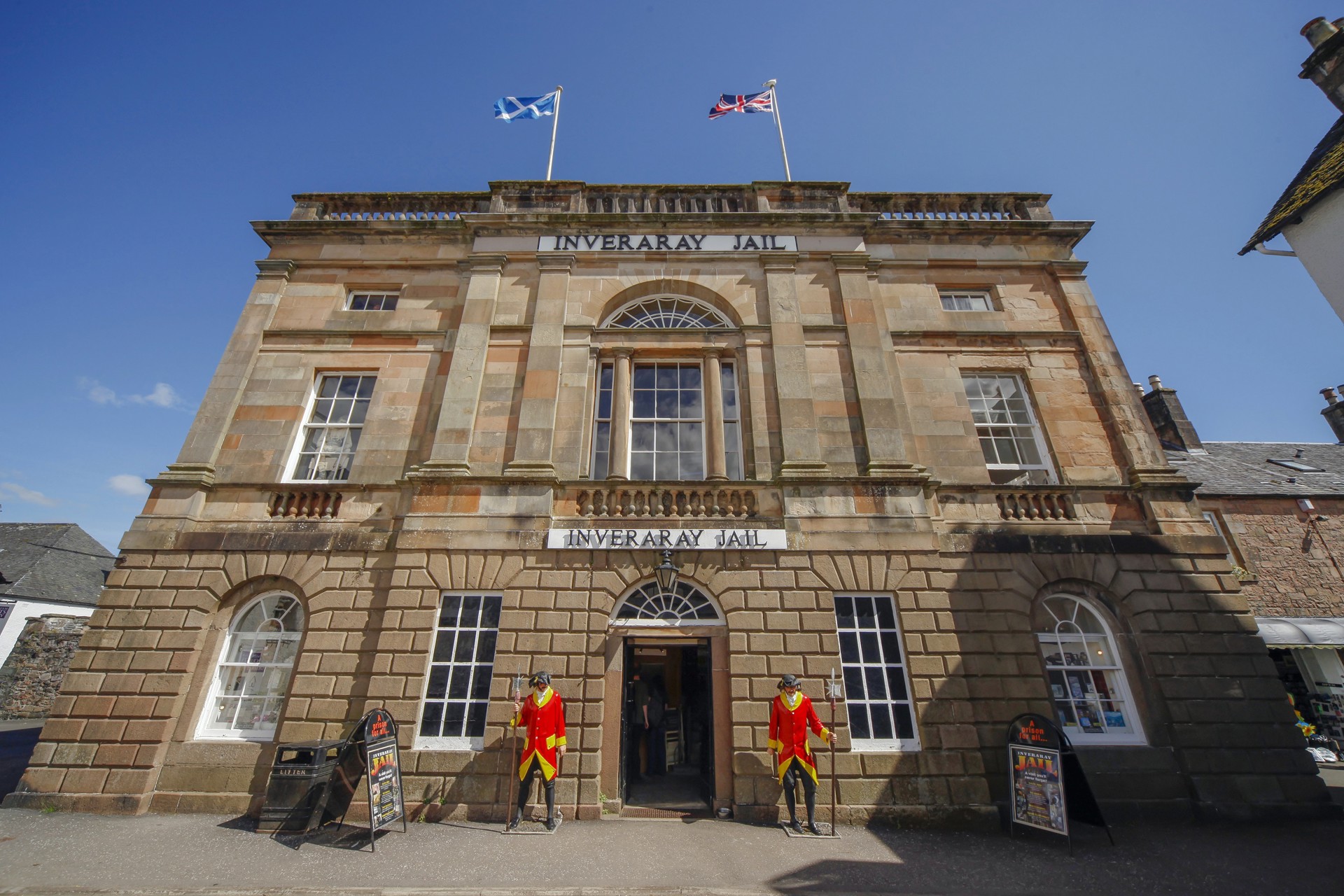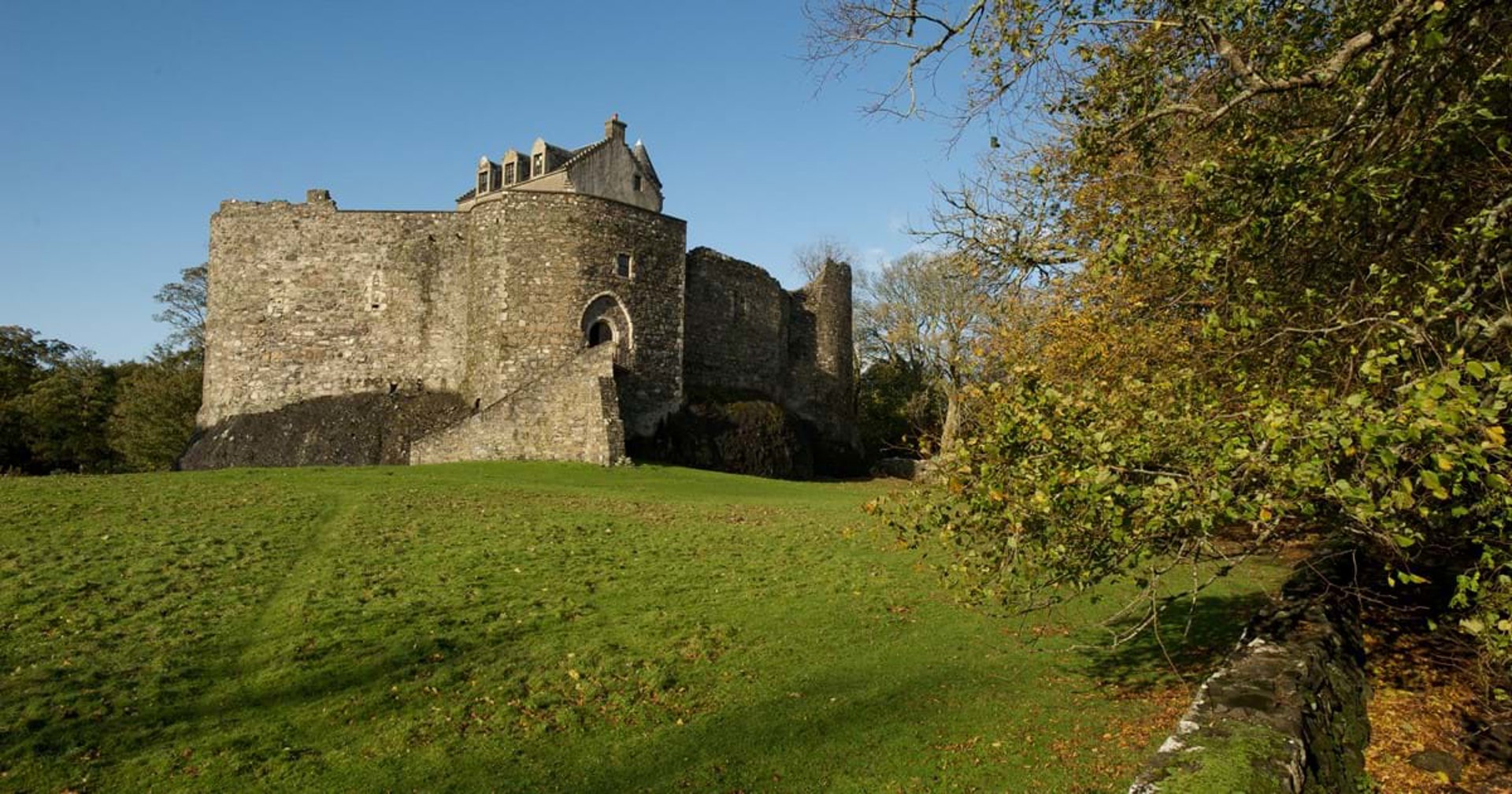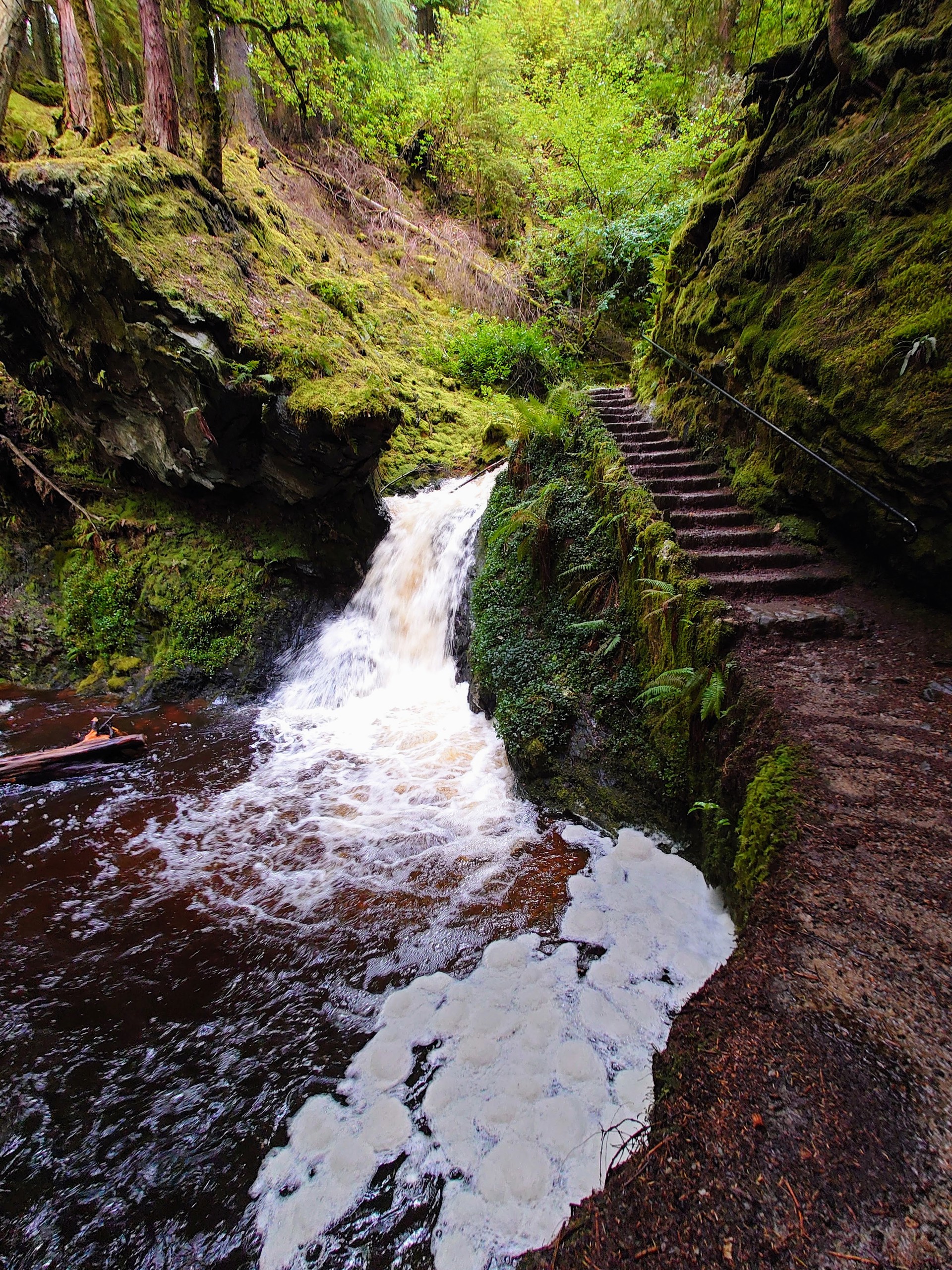10 Historic Sites in Argyll & the Isles that Reveal Scotland's History and Heritage
Step back in time and walk in the footsteps of ancient monks, kings of a time long gone and ancient civilisations – whether you’re a history buff or not, there’s something truly unique about exploring Scotland’s ancient historic sites. Argyll & the Isles is the perfect place for it!
Located on Scotland’s West Coast, you can discover a vast range of fascinating historic sites in Argyll & the Isles. You’ll find the landscape and famous miles of coastline dotted with historic sites that tell us a huge amount about Scotland’s past, such as the iconic Kilchurn Castle and the still active St Conan’s Kirk near Oban. Further inland, the area of Kilmartin Glen is one of Scotland’s richest and most important prehistoric landscapes with over 350 ancient monuments, including cairns, standing stones and stones.
If you want to truly experience how it felt living in the past, visit one of Argyll’s many historic attractions, such as the Auchindrain Township, one of the few remaining agricultural communities which survived the Highland Clearances. Other popular attractions include Bonawe Historic Iron Furnace, the best-preserved charcoal-powered iron furnace in Britain, and Inveraray Jail, a 19th-century prison and courthouse located in the historic town of Inveraray.
So, get ready to be awe-inspired by Scotland’s history when visiting these 10 historic sites in Argyll & the Isles. Enjoy the journey through Scotland’s past amidst some of the most stunning scenery!
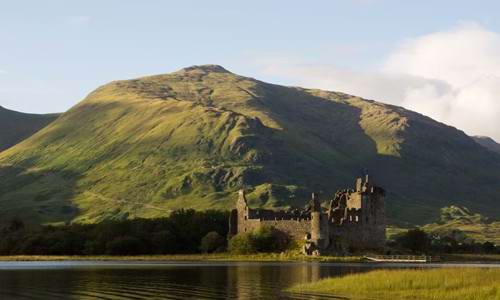
Image: Kilchurn Castle is one of the most iconic historic sites in Scotland
1. Kilmartin Glen
Kilmartin Glen is one of Scotland’s richest and most important concentrations of Neolithic and Bronze Age, with elements of the historic site dating back over 5,000 years. There are more than 350 ancient monuments within a six-mile radius of Kilmartin village, with 150 of them being prehistoric. These historic sites include standing stones, a henge monument, numerous cists, and a ‘linear cemetery’ comprising five burial cairns. Several of these, as well as many natural rocks, are decorated with cup and ring marks.
Amongst the most famous monuments in Kilmartin Glen are the Kilmartin Standing Stones, ranging in date from the 900s to the 1600s. You can see the sculptured stones at Kilmartin Glen at three separate displays: one inside the church, and the other two in the graveyard. Another important historic site is Dunadd Fort, which rises proudly from Moine Mhor – the ‘great moss’ – an expanse of bog that carpets the southern end of Kilmartin Glen. It was home to a fort 2,000 years ago, and a royal power centre of Gaelic kings in the 500s to 800s AD.
Whilst exploring Kilmartin Glen, make sure to visit Kilmartin Museum, which displays and tells the story of fascinating ancient artefacts close to the sites where they were discovered.
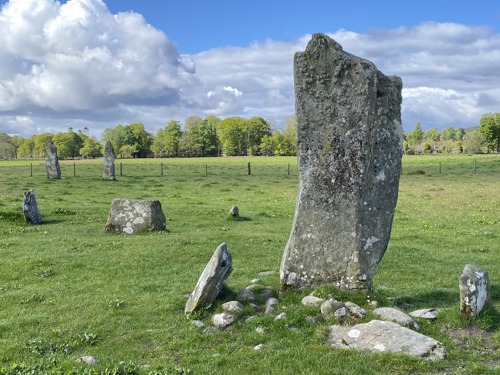
2. Mount Stuart
This historic house of Mount Stuart on the Isle of Bute is amongst the top visitor attractions in Scotland. From the heavenly 19th-century mansion to the 300 acres of gloriously maintained grounds and gardens to the award-winning visitor centre, it’s the highlight of any visit to Bute Mount Stuart was built by the 3rd Marquess of Bute in 1716, a man who was, at the time, considered to be one of the richest in the world. And when money is no object, imagination and technology are the only limiting factors.
Most of Mount Stuart’s magnificent design and craftsmanship is inspired by astrology, art and mythology. As you explore the inside of the house, you’ll discover the majestic marble hall with its world-famous vaulted ceiling, an awe-inspiring white marble chapel, sumptuous accommodation, a luxurious library, and utterly opulent reception rooms. Mount Stuart is a house of innovations. It was the first home in the world to have a heated indoor swimming pool, and the first in Scotland to be purpose-built with electric light, central heating, a telephone system and a Victorian passenger lift. Most of these are, quite remarkably, still in use today.
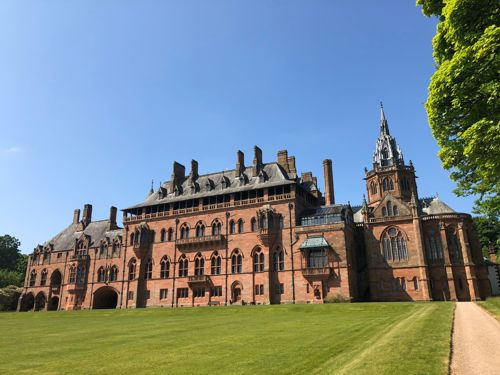
3. Inveraray Jail
Inveraray Jail is a fascinating example of a Scottish Victorian prison. Step back in time to experience what life was like for the men, women and children that were locked up here. Life in Inveraray Jail’s Old Prison was full of hardship. It was cold, damp and dark, and disease, violence and hunger were rife. This all changed with the Prison Reform Act of 1839. Built in 1848, the New Prison was a model prison in its day, with twelve individual cells, a water closet on every floor, a washroom, heating and lighting. For the first time, female prisoners were given their own cells, away from men. Food was provided for free and all physically fit prisoners had to work in their cells for up to ten hours a day. Inveraray Jail tells an absorbing story of an important period of reform in Scotland.
There's plenty to discover in Inveraray! When visiting the historic town of Inveraray make sure you drop by Scotland's oldest family-run hotel and pub, the George Hotel. Discover more things to see & do in Inveraray here.
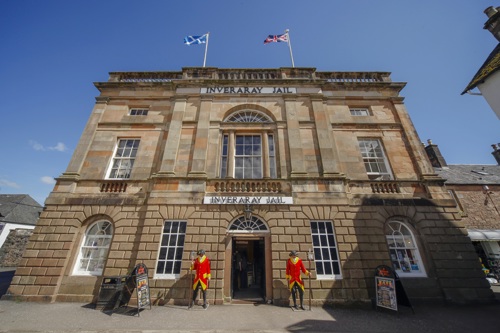
4. Iona Abbey
The beautiful Hebridean island of Iona may be small but it played a big role in Scotland’s history. It’s home to Iona Abbey, one of Scotland’s most historic and sacred sites. The abbey was founded by St Columba and his Irish followers in AD 563 and became the cradle of Christianity in Scotland. Iona is also the final resting place for many of the kings of Scotland. Reilig Odhráin, the cemetery that sits next to the Abbey, was a royal burial ground between the 9th and 11th centuries and it’s thought that over sixty kings are buried here. This was a time of struggle between the Picts, Gaels and Vikings; the period that saw the Kingdom of Scotland formed.
Other significant historic sites on Iona include MacLean's Cross, a finely carved stone cross dating to the 1400s located beside Iona’s ancient ‘street of the dead’. Pilgrims filing up from the boats would have stopped here to say a prayer on their way to Iona Abbey and St Columba’s Shrine.
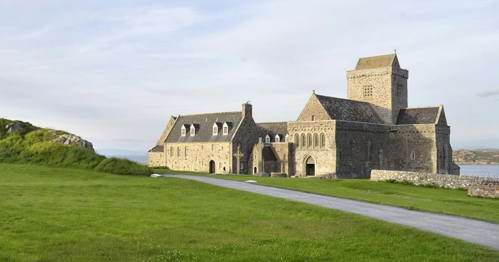
5. Auchindrain Township
Auchindrain was the last inhabited Highland farm township, communal, tenanted farm settlements that once dotted the Highlands. Modern farming practices and the associated clearances put paid to these places by the hundred, but Auchindrain uniquely survived. It’s the most complete and well-preserved example that you can visit today. Explore the longhouses, byres, stables and fields. The experience of wandering through the site will give you a fascinating insight into a lost way of life and an understanding of Scotland’s rural history.
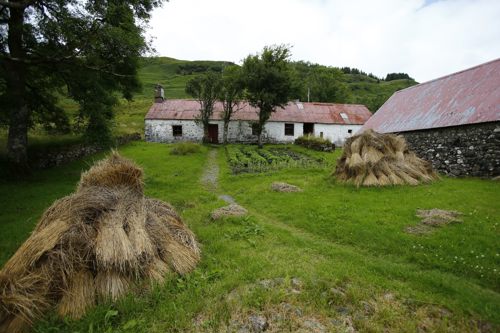
6. Kilchurn Castle & St Conan’s Kirk
Look out over Loch Awe from the powerbase of the Campbells of Glenorchy, one of the most photographed castles in Scotland. Built in the mid-1400s, Kilchrun Castle was the base of the mighty Campbells of Glenorchy for 150 years. After the first Jacobite Rising of 1689, Kilchurn was converted into a garrison stronghold, before being abandoned by the end of the 1700s. Despite having fallen into ruin, the impressive complex still dominates the landscapes surrounding Loch Awe, Scotland’s longest loch.
You can get a fantastic view of Kilchurn Castle from St Conan’s Kirk, located in the small village of Loch Awe. But the quirky, still active church is well worth a visit on its own, having been voted one of the top 10 buildings in Scotland in the last 100 years. It was built in the late 19th century and features many quirky architectural details, blending different church styles, from ancient Roman to Norman. The Kirk also claims to house a section of bone from Robert the Bruce.
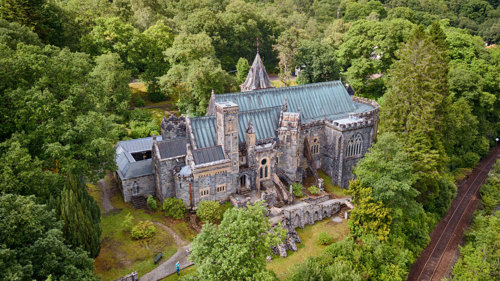
7. Dunollie Museum and Castle
Dunollie Castle is superbly situated, standing guard over Oban Bay and enjoying spectacular views towards the island of Kerrera. Originally built for the powerful Clan MacDougall in the 12th and 15th centuries, traces of human activity on the castle grounds trace back as far as 8,000 years. For more than 1,000 years, the Clan Chiefs and Lords of the Clan MacDougall ruled large areas of Argyll and the Isles from Dunollie, and to this day remains in their hands. In 1746, the MacDougalls abandoned the castle as their ancestral home and built Dunollie House just downhill from the castle ruins.
Today it remains the seat and ancestral home of Clan MacDougall. The museum, castle and grounds are great fun to explore. It is popular amongst history and nature lovers alike, because of its stunningly scenic position. Don’t miss the wonderful Willow Hall. Make sure to visit Dunollie Castle’s website for any upcoming events and family-friendly activities.
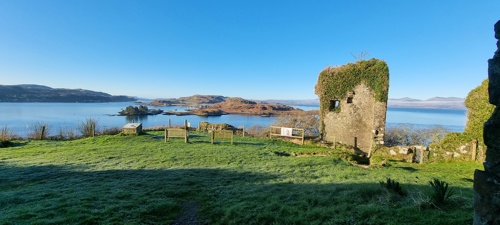
8. Castle Stalker
This privately owned, medieval castle is amongst the most romantic sights in Scotland, sitting on an islet on Loch Laich near Port Appin, Argyll. Castle Stalker is perhaps best known for being one of the filming locations for Monty Python and the Holy Grail. The name ‘Stalker’ comes from the Gaelic Stalcaire, meaning ‘hunter’ or ‘falconer’.
Originally built by the Clan MacDougall around 1320 and completed by the Stewards in around 1388, this historic site in Argyll changed hands many times until it was abandoned in 1840. In 1965, Castle Stalker was fully restored and remains in private ownership. You can visit it during selected times in the summer months via private tours.
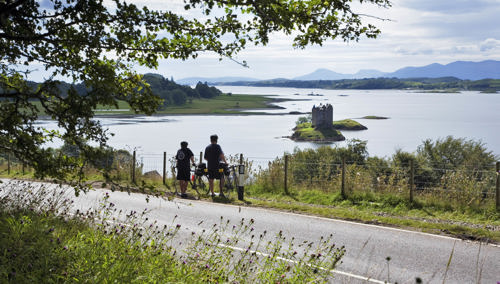
9. Bonawe Historic Iron Furnace
Step back in time and imagine the heat and noise of Bonawe, the most complete charcoal-fuelled ironworks in Britain. Founded in 1753, this historic site in Argyll ceased firing only in the 1870s. Located at the head of Loch Etive, Bonawe’s stunning setting seems at odds with its industrial past. However, in its heyday, the furnace produced up to 700 tons of pig iron a year and employed more than 600 people. Today, displays show every stage of how pig iron was made – as well as cannonballs for use in the Napoleonic Wars.
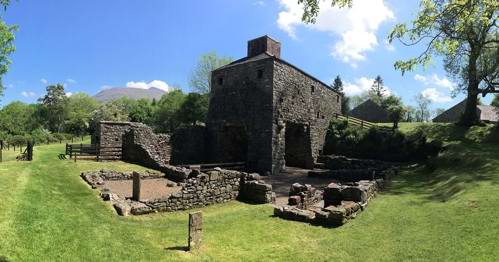
10. Dunstaffanage Castle
Dunstaffnage Castle is located on a huge rock overlooking the Firth of Lorn near Oban and remains one of Scotland’s oldest stone castles. Built in 1220 by Duncan MacDougall, the self-styled ‘King of the Isles’, and played an important role during these stirring times in Argyll and the struggle between the Kingdom of Scotland and Norway for control of the Hebrides. The historic site remained an important stronghold of the MacDougalls until it was famously captured by Robert the Bruce in 1308 during the Wars of Independence. Dunstaffnage remained a royal castle until it passed to the Campbell earls of Argyll in the 1460s. Late in 1746, Dunstaffnage welcomed one of its more famous guests, Flora MacDonald, who was kept prisoner for helping Bonnie Prince Charlie evade capture from the Redcoats.
Today, you can explore the remarkable remains, including a stone curtain, the ancient Dunstaffnage Abbey hidden on the grounds, and step inside the three-storey gatehouse. Dunstaffnage Castle offers a variety of family-friendly events throughout the year. Head to Historic Environment Scotland’s website for more information.
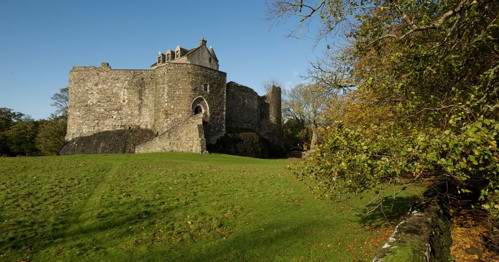
Do you want to become a Lord or Lady of the Glen?
So long as don’t mind that the Lordship or Ladyship is a fun novelty, It is possible to purchase a Lordship title from companies like Highland Titles. Highland Titles manages more than 800 acres in the beautiful highlands of Scotland, and the nature reserve at Duror, near Glencoe, is one of the most popular nature reserves in Scotland. Tens of thousands of Lairds, Lords, and Ladies have visited the Highland Titles Nature Reserve at Duror, and all of them have strengthened their emotional ties with Scotland.
